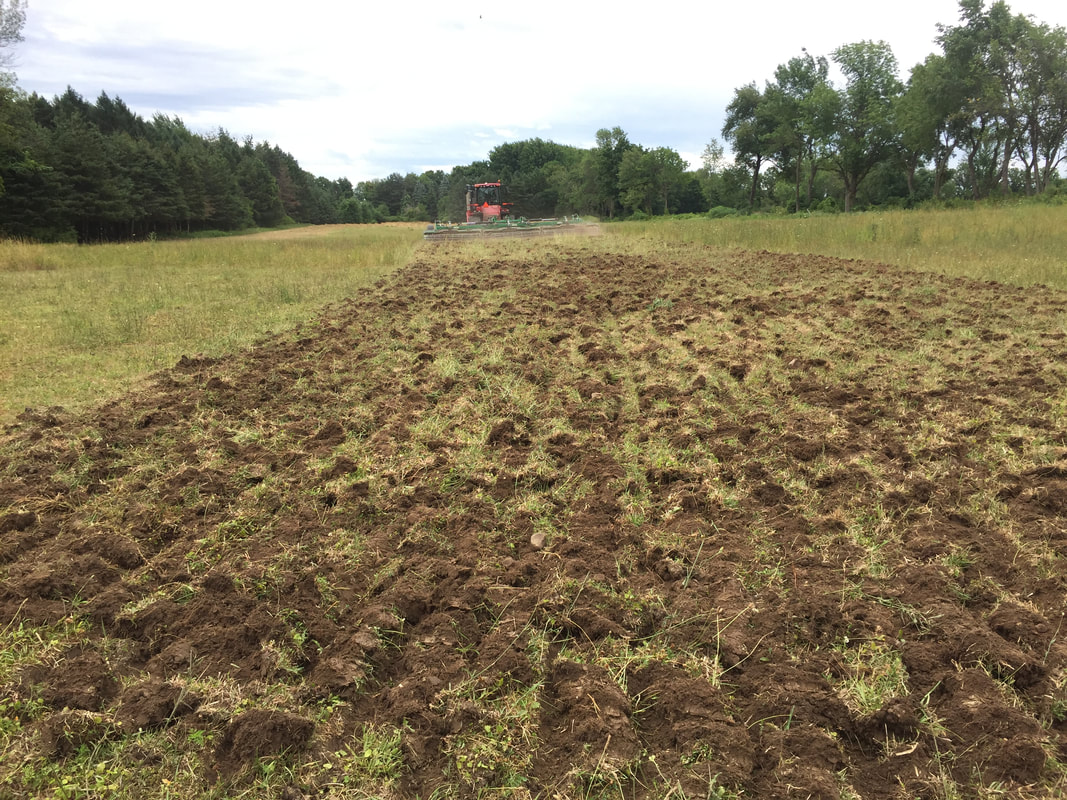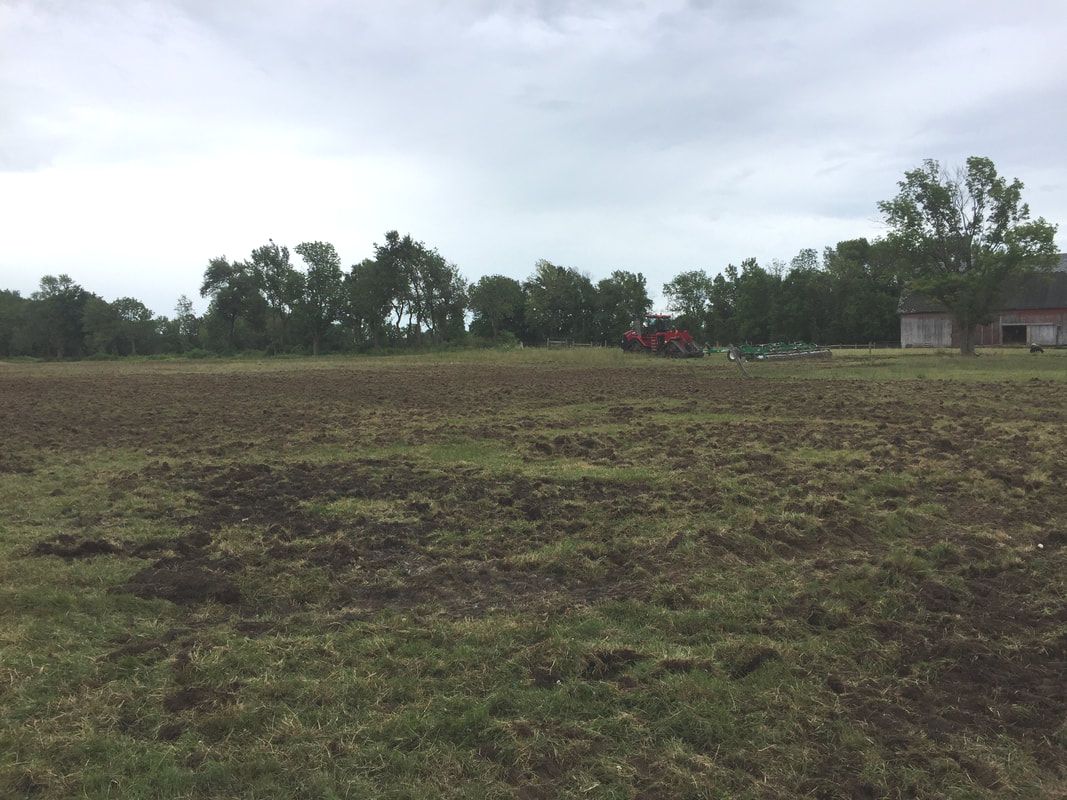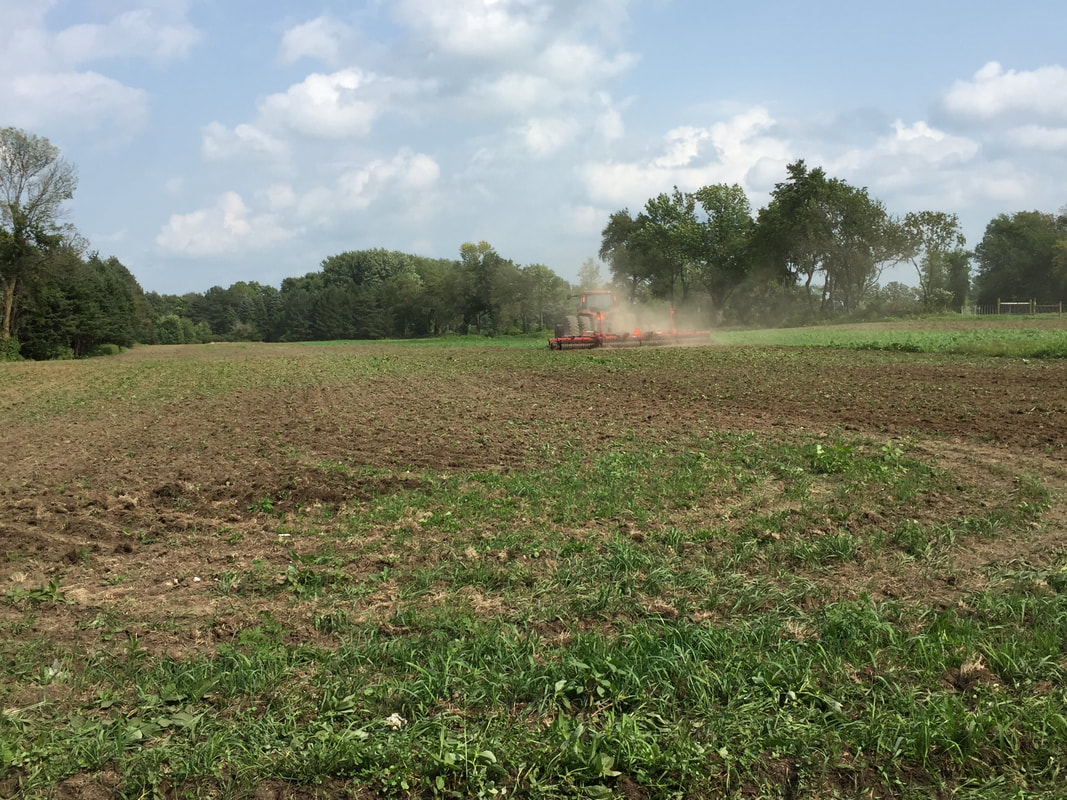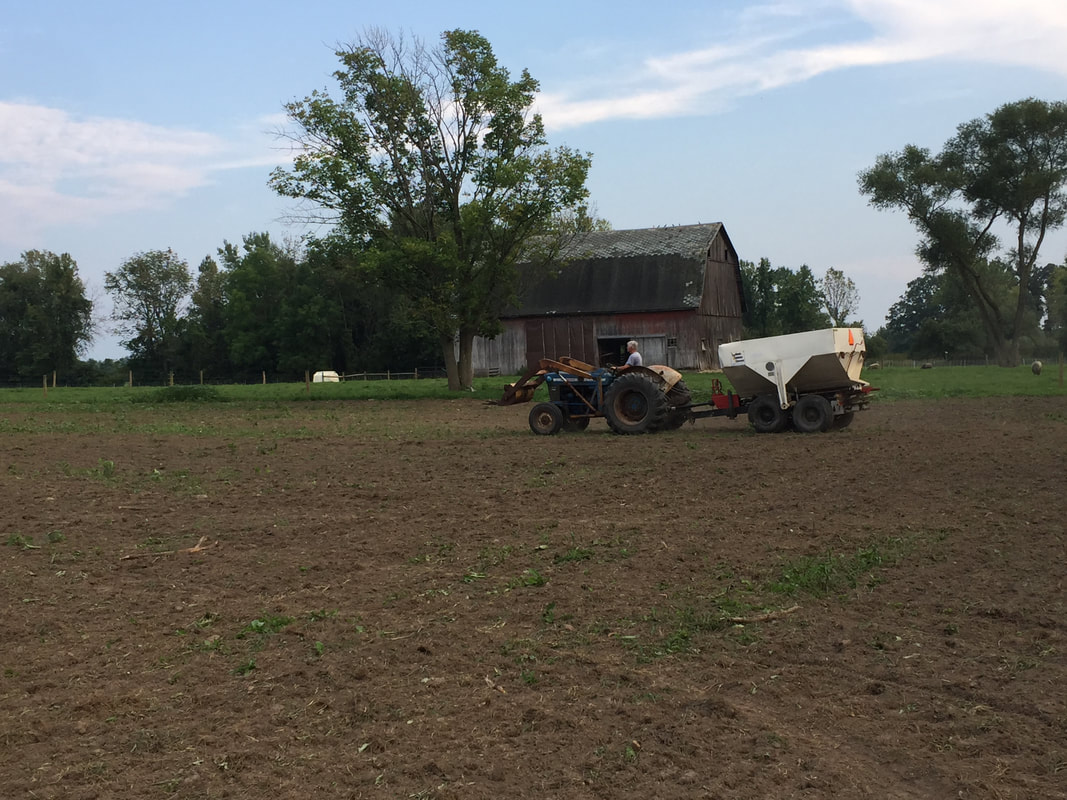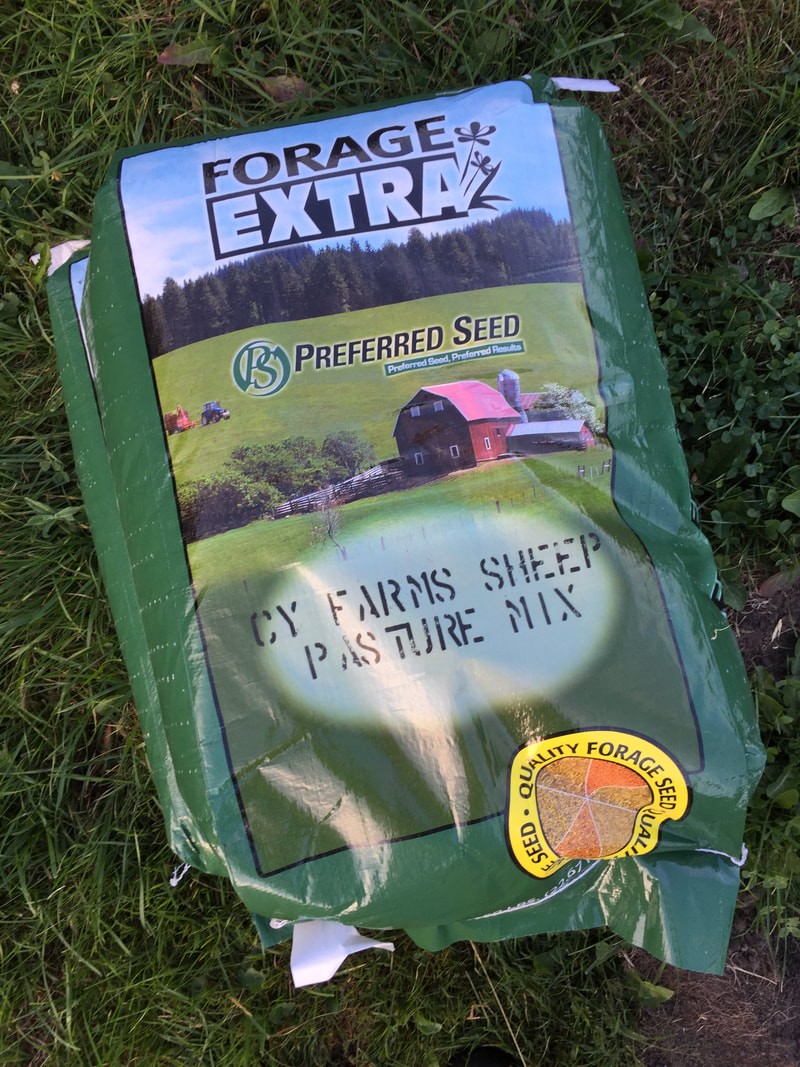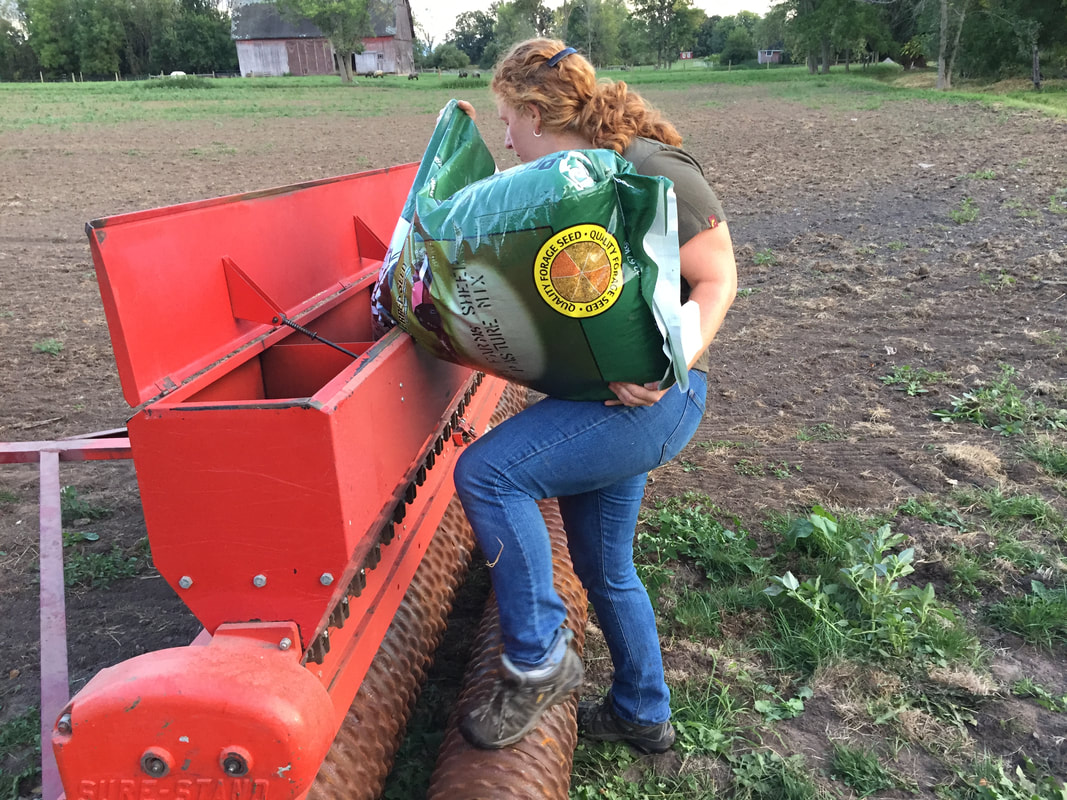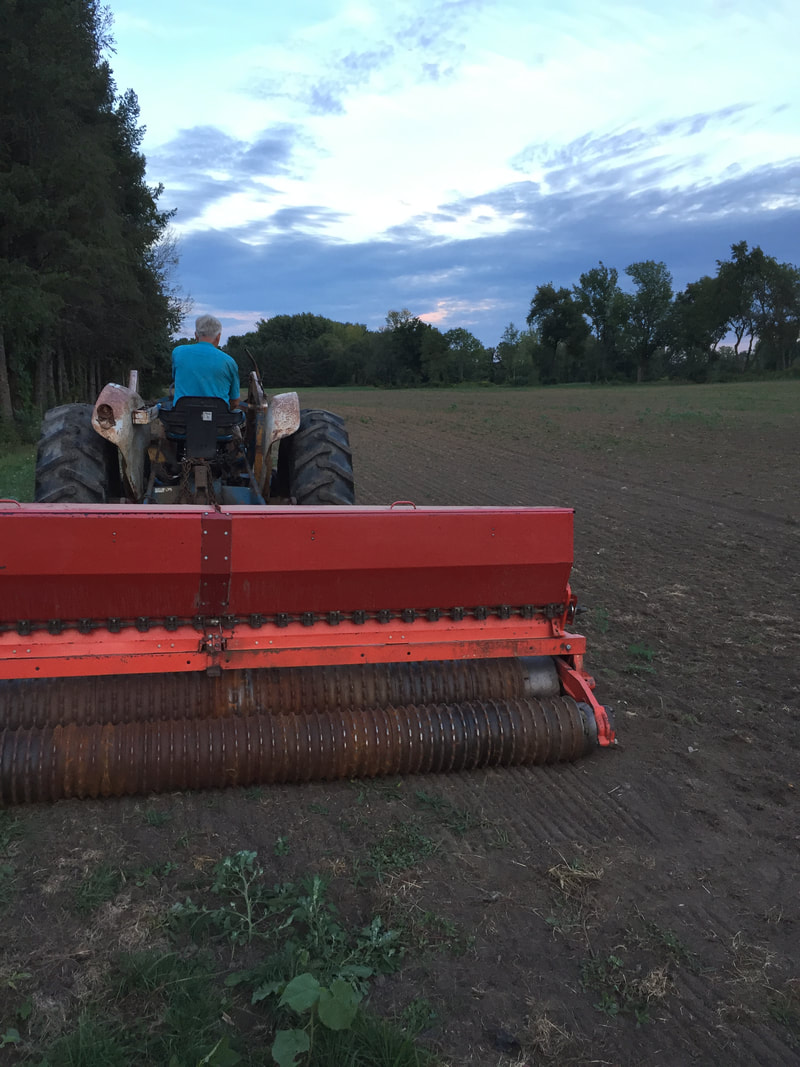|
This summer marked the forth summer in my house, which is pretty hard to believe! I was lucky to be able to purchase a house next door to my parents that came with a small barn and just over 10 acres of land. Four acres of that was a fallow field that we have been grazing the sheep on for the past few summers. I don't know when the last time it was actually seeded with a crop, so it was mostly native grasses with a lot of plantain and other weeds the sheep weren't too crazy about. Since I bought the property, it has been my dream to seed it with an actual pasture mix. We have never actually seeded a pasture in the 15+ years I've been raising sheep. I've been doing some reading on the species I wanted to plant, but since we don't own equipment ourselves I needed to line up people to do the work for me. The summer of 2016 brought a bad drought and last summer (2017) was incredibly wet, both of which weren't ideal conditions for seeding a pasture. Finally, we decided this year was the year! I work for a large farm, so I had access to some equipment that the average person working up a 4.5 acre field wouldn't need, but they were able to help me get the job done quickly and efficiently! Step 1: Speed tillOn July 23rd, after we had finally gotten some rain this summer, the farm I work for was in the area with the speed-tiller and stopped to work my field up. This implement is really useful for ripping up sod, as the disks are able to go fairly deep in the soil, while still maintaining a good speed with the tractor. As I mentioned, this is probably not an implement that a small farm would have access to without having a custom operator come in to do the work (as I did). Four times over the field left it nicely worked up, the sod chunks broken up and ready for the next step. Step 2: CultimulchThe next step was to cultimulch the field to put the "finishing touches" on before seeding. A cultipacker or cultimulcher is used after the field has been plowed and/or disked. The purpose is to crush soil clods and firm the soil surface. This levels the ground and prepares the field for planting. A cultimulcher is an important implement for preparing seedbeds for grass and clover, which I planned to plant. The seeds of these plants are small and need firm contact with tilled soil for germination. Unfortunately for us, it started raining at the end of July and rained regularly throughout the month of August, making this task difficult to time. At the end of August I was able to line up a nearby dairy farm to help with the task. They came to do the first pass on August 26th. As you can see by the photo above, many weeds had started to grow, but two passes over the field were able to knock most of them down. I'm also hoping allowing the weeds to germinate during that month will reduce weed pressure this fall, which is the concept behind a stale seed bed. Step 3: FertilizingWe didn't have time to clean out the barns and apply manure to the field as a fertilizer source, so we decided to apply fertilizer. I wanted to make sure that as long as we were taking the time and money to do this project, that we were doing it well. Hopefully this pasture is a long term investment for my flock. I work with Carolina Eastern Crocker with work, so called them up to help formulate a blend. Ideally, I would've soil sampled the field to get an idea of what nutrients are out there, but just didn't have the time. They formulated a 10-20-20 fertilizer with some sulfur and calcium added. Applied at 200 lbs/ac, this should provide plenty of nutrients to get the grasses and clovers established. We were able to rent the spreader and they delivered the spreader full of fertilizer right to the farm. Following the fertilizer application, we went over the whole field again with the cultimulcher to work the fertilizer in. Then we were ready to plant! Step 4: SeedingI have gone back and forth over the last couple years, trying to figure out what blend I wanted to seed with when I finally got to this project. I've been doing some reading on what forages are best for sheep, trying to figure out what might do well in the areas of the pasture that are more wet, and which species/varieties would be the best value. White Clover Farm in the Finger Lakes has some interesting articles on which species he plants, which (as you can guess by his farm name) is mostly white clover. The farm I work for grows turfgrass and we have some great connections at Preferred Seed in Buffalo who were able to help me formulate a blend that would work for productivity, nutrition, be long-lasting, and grow in the wetter areas of the field. We ended up with a blend of orchardgrass, white clover, perennial ryegrass and Kentucky bluegrass.
To seed the pasture, I borrowed a Brillion Turfmaker from the farm I work for. This 1980's seeder was used for many years to seed our turfgrass fields and still works great. Those of you looking to seed can probably find one of these (or something similar) at a local farm or in someone's barn somewhere. Getting the calibration for the seed rate was a bit tricky. I knew I wanted to seed at 30 pounds/acre, but we set it conservatively low the first time over the field to make sure we would have enough seed. It took my dad three times over the field to use up all the seed. He was a little annoyed, but we went over the field 2 different directions to help with coverage. Normally, you'd want to go over the field with the cultimulcher again to get good seed-soil contact, but since the seeder has a small one built in and we went over the field 3 times, I didn't feel like a final pass was necessary. A few days after seeding, we got 1.5"of beautiful, steady rain which couldn't have been more perfectly timed! Now we wait for the pasture to grow.
Please feel free to ask questions about my process. I am not an expert and relied on reading articles and consulting with people who are to help me figure out what I needed with regards to a species blend. I'd be happy to discuss my process further, share the financial investment it took, or answer questions for anyone who is interested. In the meantime, I'll keep you updated with the growth progress throughout the fall.
2 Comments
|
AuthorEmmaline Long, main owner of Orchard View Farm, has a passion for Lincoln sheep and loves educating others about her breed and farm, She currently serves as the Vice President of the National Lincoln Breeders Association. Archives
October 2020
Categories
All
|
Orchard View Lincoln Longwools7617 S. Lake Rd., Bergen NY 14416 |
Contact UsStay Up-To-DateFollow our blog!
|

